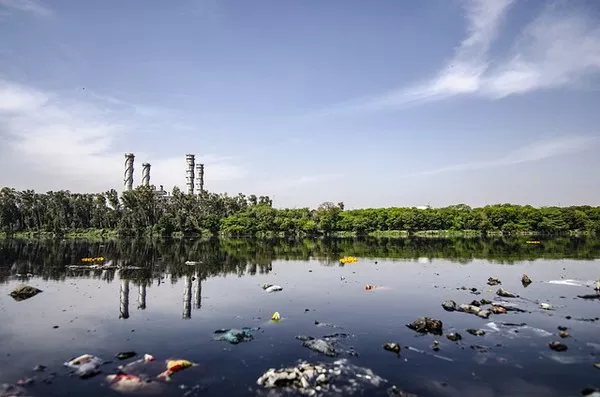In the realm of environmental engineering and public health, water treatment and wastewater treatment are vital processes that ensure the safety and sustainability of our water resources. While both involve the purification of water, they serve distinct purposes in managing water quality from different sources and with varied objectives. This article delves into the differences between water treatment and wastewater treatment, exploring their processes, objectives, and significance in maintaining clean and safe water supplies.
Water Treatment: Ensuring Safe Drinking Water
Water treatment focuses on making raw or untreated water safe for human consumption and other domestic or industrial purposes. The primary goal is to remove contaminants and impurities from the water to meet specific quality standards. This process typically begins with the collection of raw water from natural sources such as rivers, lakes, or groundwater reservoirs.
The key objectives of water treatment include:
Removal of Physical Impurities: The first step often involves the removal of large particles and sediments through processes like sedimentation and filtration. This helps clarify the water and makes subsequent treatment steps more effective.
Disinfection: Waterborne pathogens such as bacteria, viruses, and protozoa are a major concern. Disinfection methods such as chlorination, UV irradiation, or ozonation are employed to kill or inactivate these microorganisms and ensure the water’s safety for drinking.
Chemical Treatment: This step involves the addition of chemicals like coagulants (e.g., alum) and flocculants to facilitate the removal of smaller suspended particles and dissolved contaminants through processes like flocculation and sedimentation.
Filtration: After chemical treatment, the water undergoes filtration through sand, activated carbon, or other media to remove remaining fine particles, dissolved organic compounds, and residual disinfectants.
pH Adjustment and Desalination: Depending on the source water’s characteristics, pH adjustments and desalination may be necessary to ensure the water is within acceptable quality standards.
The end result of water treatment is potable water that meets regulatory standards for safe consumption. This treated water is distributed through municipal water systems for use in homes, businesses, and industries.
Wastewater Treatment: Safeguarding the Environment
Wastewater treatment, on the other hand, deals with the purification of used water (or wastewater) before its return to the environment. Wastewater is generated from various sources, including domestic activities (e.g., sewage), industrial processes, and agricultural runoff. Without proper treatment, discharging wastewater directly into water bodies can lead to contamination and environmental degradation.
The primary objectives of wastewater treatment are:
Removal of Contaminants: Wastewater contains a range of pollutants, including organic matter, nutrients (e.g., nitrogen, phosphorus), pathogens, heavy metals, and toxic chemicals. The treatment process aims to eliminate or reduce these contaminants to prevent adverse impacts on ecosystems and public health.
Biological Treatment: Many wastewater treatment plants employ biological processes such as activated sludge, trickling filters, or constructed wetlands. These processes use microorganisms to break down organic matter into harmless substances like carbon dioxide and water.
Physical and Chemical Treatment: In addition to biological treatment, physical processes like screening, sedimentation, and chemical processes such as coagulation and disinfection are utilized to further purify the wastewater.
Nutrient Removal: Excess nutrients like nitrogen and phosphorus can cause eutrophication in water bodies. Advanced treatment methods like biological nutrient removal (BNR) are employed to reduce nutrient levels in treated wastewater.
Disinfection: Before discharge, wastewater is often disinfected using chlorine, ultraviolet light, or other methods to kill remaining pathogens and protect public health.
The ultimate goal of wastewater treatment is to produce effluent that meets environmental regulations, ensuring that discharged water does not harm aquatic ecosystems or compromise human health. Treated wastewater can be safely reintroduced into rivers, lakes, or oceans, or reused for purposes like irrigation or industrial processes.
Key Differences and Importance
The fundamental difference between water treatment and wastewater treatment lies in their starting point and end goals. Water treatment focuses on making raw water safe for consumption, emphasizing the removal of contaminants to produce clean drinking water. In contrast, wastewater treatment involves cleaning used water to protect the environment and public health by removing pollutants before its return to natural water bodies.
Both water treatment and wastewater treatment play critical roles in safeguarding water resources and public health. Water treatment ensures access to safe drinking water, preventing waterborne diseases and supporting daily activities. Wastewater treatment protects ecosystems and water quality, mitigating pollution and supporting sustainable water use.
In conclusion, while water treatment and wastewater treatment share the common goal of water purification, they differ in their starting materials, treatment processes, and objectives. Together, these processes contribute to the sustainable management of water resources, highlighting the importance of comprehensive water management strategies in promoting environmental stewardship and public health.

